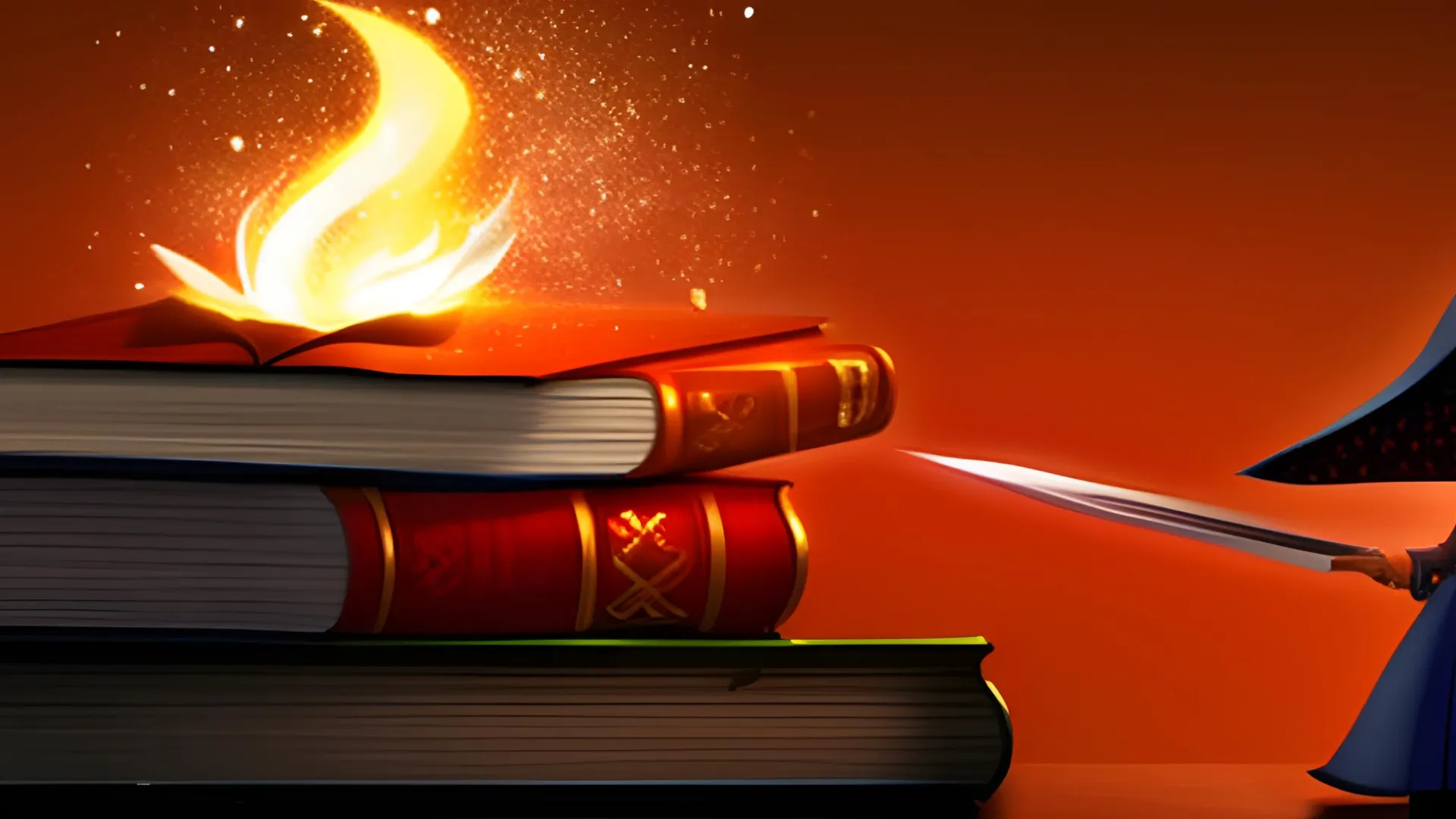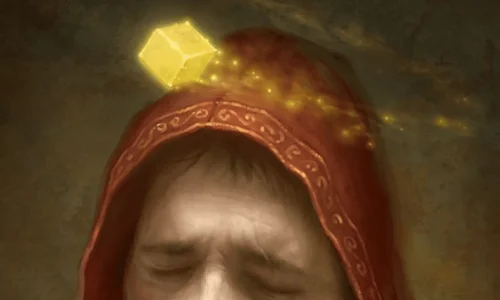Sleep spells are a type of enchantment magic in Dungeons and Dragons (D&D) 5th edition that can be used to put creatures to sleep. These spells can be useful in both combat and non-combat scenarios, providing a strategic advantage to the caster and their allies.
In this guide, we will explore the mechanics of Sleep spells, how to use them effectively, and their potential when combined with other enchantment spells. Additionally, we will discuss the different ways in which Sleep spells can be used by different character classes, including Sorcerers, Wizards, Bards, and Clerics.
Whether you’re a seasoned D&D player or a beginner, this guide will provide you with valuable insights on how to utilize Sleep spells to their fullest potential.
Sleep Spell Mechanics
The “sleep” spell works by magically inducing a deep slumber in creatures within range. It involves targeting an area, calculating the number of hit points affected, and having creatures make a saving throw to avoid falling asleep.
Once asleep, creatures can be woken up by being shaken or damaged, and there are no lingering effects. The “sleep” spell can be used in combination with other spells to create powerful effects, making it a versatile tool in a spellcaster’s arsenal
Casting the Spell: To cast the “sleep” spell, the caster must have it prepared and expend a spell slot of the appropriate level. They must then use an action to cast the spell, which involves making somatic gestures and speaking the verbal components of the spell.
They may also use a pinch of fine sand, rose petals, or cricket as a material component.
Determining Targets: The spell targets a specific area within range, and creatures within that area become potential targets for the spell. The spell puts creatures to sleep in ascending order of their current hit points, starting with the creature with the lowest current hit points in the area
Calculating Hit Points Affected: The total number of hit points of creatures affected by the spell depends on the level at which the spell is cast. At first level, the spell puts to sleep creatures with a total of up to 20 hit points.
At higher levels, the total number of hit points affected increases by 10 for each level above first. If there are more creatures in the area than the spell can affect, the spell puts the creatures with the lowest current hit points to sleep first.
Resistance: Some creatures may be immune or resistant to the effects of the “sleep” spell. Creatures that are immune to being charmed, such as undead or constructs, are immune to the spell, while creatures that have advantage on saving throws against being put to sleep, such as elves, have resistance to the spell.
Falling Asleep: Once a creature is affected by the spell, it must make a Wisdom saving throw to avoid falling asleep. The DC for the saving throw is determined by the caster’s spellcasting ability modifier plus their proficiency bonus.
If the creature’s saving throw is successful, it is not affected by the spell. If the saving throw fails, the creature becomes unconscious for the spell’s duration or until it is woken up by being shaken or damaged.
Duration: The “sleep” spell’s duration is 1 minute, which means that affected creatures will remain asleep for that time unless they are woken up by an outside force. After the spell’s duration ends, creatures wake up as if from a normal sleep, and there are no lingering effects.
Range: The range of the “sleep” spell is 90 feet. This means that the spell can affect creatures within a 90-foot radius of the caster. The caster must have line of sight to the area they are targeting, and the area must not be behind total cover.
Area of Effect: The “sleep” spell affects a specific area within range, which the caster chooses. The area can be a point in space or a cubic area up to 20 feet on a side. Any creature within the area becomes a potential target for the spell.
Order of effect: The spell puts creatures to sleep in ascending order of their current hit points, starting with the creature with the lowest current hit points in the area. This means that creatures with higher hit points are affected later in the spell’s casting.
Overcoming Sleep: Creatures affected by the “sleep” spell can be woken up by being shaken or damaged. The spell does not provide any lasting effects, so once the spell’s duration ends or a creature is woken up, they are fully recovered with no negative consequences.
Combining with Other Spells: The “sleep” spell can be combined with other spells to create powerful effects. For example, it can be used in combination with spells that deal damage, such as the “fireball” spell, to eliminate enemies quickly and efficiently.
Alternatively, it can be combined with spells that create illusions or distract enemies to create opportunities for the party to take advantage of.
Synergy with Sneak Attacks: The “sleep” spell is particularly useful for characters with the Sneak Attack ability, such as rogues. A sleeping creature is considered to be incapacitated, which means that attacks against them have advantage and any hit is considered a critical hit if the attacker is within 5 feet of the creature.
Limitations: The “sleep” spell has several limitations that should be considered before casting. For example, it does not work on undead, constructs, or creatures that are immune to being charmed. Additionally, it only affects creatures within a specific range and does not provide any lasting effects once the spell’s duration ends.
Roleplaying Opportunities: The “sleep” spell can also provide roleplaying opportunities for players and dungeon masters. For example, characters may have moral objections to using the spell to put creatures to sleep, preferring to find non-violent solutions to conflicts.
Additionally, characters who use the spell frequently may become known for their ability to disable enemies without causing harm.
Variations: There are also variations of the “sleep” spell that exist in different editions of Dungeons and Dragons, or in homebrew rules. For example, in some editions, the spell can be cast at a higher level to affect more hit points, while in others, the spell may affect a larger area or provide additional effects.
Usefulness in Combat: The “sleep” spell can be particularly useful in combat situations, especially against a large number of weaker enemies. By putting several enemies to sleep at once, the party can quickly eliminate them one by one without taking any damage themselves.
Usefulness in Non-Combat Situations: The “sleep” spell can also be useful outside of combat situations. For example, it can be used to put guards or other non-player characters to sleep in order to gain access to a location or item.
It can also be used to avoid combat altogether by putting enemies to sleep before they become aware of the party’s presence.
Saving Throw DC: The saving throw DC for the “sleep” spell is calculated using the caster’s spellcasting ability modifier plus their proficiency bonus. The DC increases as the caster’s level increases.
Components: The “sleep” spell requires verbal and somatic components to cast. This means that the caster must speak an incantation and make specific hand gestures to cast the spell.
The spell also requires a small amount of sand or rose petals as a material component.
Who can use Sleep?
In D&D 5e, Sleep is a 1st-level enchantment spell that is available to the following classes:
Bard: Bards have access to Sleep spells through their Magical Secrets feature, which allows them to learn spells from any class list.
Sorcerer: Sorcerers can choose Sleep spells as one of their starting spells or learn them later as they level up.
Wizard: Wizards can choose Sleep spells as one of their starting spells or learn them later as they level up.
Warlock: Warlocks can choose Sleep spells as one of their spells known or learn it later through their Mystic Arcanum feature.
Trickery Domain Cleric: Clerics with the Trickery domain have access to Sleep spells.
It’s crucial to note that while Sleep is available to these classes, the number of spells they can cast per day is limited by their class level and spellcasting ability.
Additionally, some subclasses or archetypes within these classes may have unique features or abilities that modify the way Sleep spells work or interact with other spells.
It is a useful tool for spellcasters who specialize in enchantment magic or who want to gain control of the battlefield by putting enemies to sleep. By understanding who can use Sleep spells and how they work, players can effectively use them to gain an advantage in combat encounters.
Strategies for Using Sleep Spells
Here are some strategies for using Sleep spells effectively in D&D 5e:
Using Sleep spells in combat: Sleep spells can be useful in combat situations to take out weaker enemies or to temporarily disable a dangerous opponent.
It’s important to note that the spell affects creatures with the lowest current hit points first, so it’s best to target creatures that are already injured. it’s important to be aware of the area of effect and avoid targeting friendly creatures.
Using Sleep spells for non-combat scenarios: Sleep spells can be useful for getting past guards or putting NPCs to sleep to steal or gather information. However, it’s important to remember that the spell ends if the affected creature takes damage, so it’s important to be stealthy and avoid waking them up.
Combining Sleep spells with other spells and abilities: Sleep spells can be used in combination with other spells and abilities to create powerful combinations. For example, using a Web spell to trap enemies in place before casting Sleep can ensure that they can’t be shaken awake easily.
Advantages and Disadvantages of Sleep Spell
Some advantages and disadvantages of using Sleep spells in D&D 5e:
Advantages:
Crowd Control: Sleep spells are a powerful crowd control tool that can be used to disable groups of enemies in combat, reducing the number of enemies that the caster and their allies have to face. This can make combat encounters easier and reduce the risk of casualties.
Low-Level Spell: Sleep is a 1st-level spell, which means that it can be cast by many different character classes at a relatively low level. This makes it accessible to a wide range of characters and can be useful for new players who are just starting to learn the game.
Versatile: Sleep spells can be used in a variety of situations, from disabling enemies in combat to putting NPCs and creatures to sleep to gather information or to sneak past them undetected
Disadvantages:
Limited Effectiveness: Sleep spells become less effective as the characters and their enemies gain levels and hit points. At higher levels, the number of hit points affected by Sleep spells becomes less significant, making it less useful in combat encounters.
Limited Range: Sleep spells have a limited range of 90 feet, which means that the caster needs to be relatively close to their target to use it effectively. This can put the caster at risk of retaliation from the enemy.
Wakes Up on Damage: Creatures affected by Sleep spells wake up when they take damage, which means that Sleep spells can be less useful against enemies with high damage output or who are resistant to certain types of damage.
Sleep Spells in Combination with Other Enchantment Spells
There are some ways Sleep spells can be used in combination with other enchantment spells in D&D 5e:
Charm Person: Charm Person is a 1st-level enchantment spell that allows you to befriend a humanoid creature for a duration of up to 1 hour. If you successfully charm a creature, you can then cast Sleep on them while they are friendly towards you.
This can be useful for disabling a dangerous opponent or for gathering information from a friendly NPC.
Hold Person: Hold Person is a 2nd-level enchantment spell that allows you to paralyze a humanoid creature for a duration of up to 1 minute. If you successfully hold a creature, you can then cast Sleep on them while they are unable to move. This can be useful for taking out a particularly dangerous opponent in combat.
Dominate Person: Dominate Person is a 5th-level enchantment spell that allows you to control the actions of a humanoid creature for a duration of up to 1 hour. If you successfully dominate a creature, you can then order them to fall asleep, allowing you to control their actions for the duration of the spell.
When using Sleep spells in combination with other enchantment spells, it’s important to be aware of the spell levels and casting times. Additionally, it’s important to consider the range and area of effect of each spell and to position yourself and your allies accordingly.
Combining Sleep spells with other enchantment spells can create powerful combinations that can provide a strategic advantage to the caster and their allies. However, it requires careful planning and execution to use effectively.
Tips for optimizing the use of Sleep spells: It’s important to be aware of the range and area of effect of the Sleep spell and to position yourself and your allies accordingly. Additionally, it’s important to target creatures with low hit points first and to avoid targeting creatures that are immune to sleep.
Sleep spells can be a useful tool for both combat and non-combat scenarios, but it requires careful planning and execution to use effectively. When used correctly, Sleep spells can provide a strategic advantage to the caster and their allies.
FAQs
Are elves immune to Sleep?
In D&D 5e, Elves are not immune to Sleep spells. However, they do have a racial feature called “Fey Ancestry” that grants them an advantage on saving throws against being charmed and magic cannot put them to sleep.
Can Sleep spells be used to put multiple creatures to sleep at once?
Sleep spells can affect multiple creatures within the spell’s area of effect as long as the total number of hit points of the affected creatures is less than or equal to the spell’s maximum hit point threshold.
Can Sleep spells be resisted?
Yes, Sleep spells can be resisted by creatures affected by the spell. When a caster uses Sleep, creatures within the spell’s area of effect must make a saving throw to resist the spell’s effects.
How many creatures can be affected by Sleep spells?
The total amount of hit points that can be affected by the spell is determined by the caster’s level. The spell description states that the spell affects 2d8 hit points of creatures per level of the caster.
How does the Sleep spell interact with other spells and abilities?
Sleep spells can be used in combination with other spells and abilities to create powerful combinations. For example, a wizard could use their Familiar to deliver a Sleep spell to an area that is outside of their range. Additionally, spells like Entangle can be used to trap enemies in place before casting Sleep to maximize its effectiveness.








